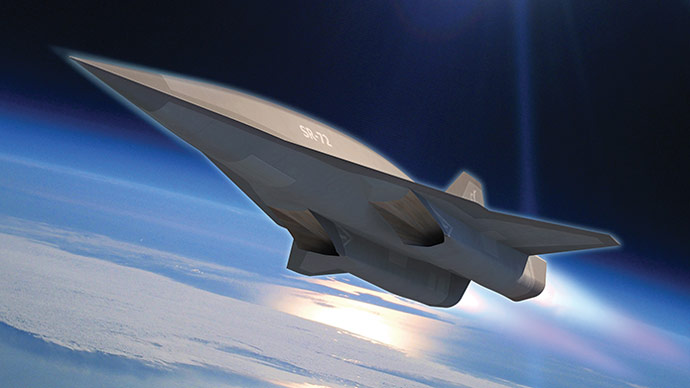New York To London Within An Hour? Hypersonic Flight May Revolutionize World Travel
Imagine you could go anywhere in the world and still be home in time for dinner. You could hop on a plane in New York and arrive in London within an hour. From London, you could jet off to Tokyo in just two hours. Where would you go?
Once limited to science fiction, ultrafast airplanes could be a reality in the near future thanks to Lockheed Martin. The American aerospace and defense company reported that a new spy plane is in the works. This one could reach speeds of up to 4,567 mph, or about three times the speed of sound.
The new plane, named the SR-72, is set to be operational as early as 2030. The fighter jet-sized plane would be able to go completely around the world in just six hours.
It will be the awe-inspiring successor to the SR-71 developed in 1976, also known as Blackbird. The SR-71 still holds the air speed record of Mach 3, just half the anticipated speed of the new model, nicknamed Son of Blackbird.
Military Applications
The SR-72 is being developed primarily for military use. The press release states, “At this speed, the aircraft would be so fast, an adversary would have no time to react or hide.” It also points out that the vehicle “could penetrate denied airspace and strike at nearly any location across a continent in less than an hour.” In other words, Son of Blackbird would have free reign and would be all but unstoppable.
Engineers still have plenty of work to do on the design before the 2030 mark. “If anything goes wrong, it’s going to go wrong very quickly, and the potential for disaster is that much greater,” said Dr. Phillip Atcliffe, senior lecturer in aeronautical engineering at Salford University, in an interview with the Daily Mail.
The Daily Mail reports that the plane will have a shell made of titanium crystals wrapped in carbon fiber to protect it from extreme heat caused by friction. A single tear in this outer layer would result in complete chaos. “If something breaks the plane’s skin, at that sort of speed the airflow is so powerful it can start tearing chunks off the plane and it would disintegrate very quickly,” Dr. Atcliffe explained.
Commercial Applications
Although the perfected technology is still nearly two decades away, hopefuls are already looking forward to the day that this plane could be used commercially. However, the commercial development of this technology would take even more time and money.
In order to be viable at all, it would have to hold significantly more passengers than a spy plane could. According to the Daily Mail, experts estimate that a hypersonic passenger jet could one day hold up to 300 passengers, enough to potentially keep ticket prices low.
Additionally, the jets wouldn’t be able to fly at today’s typical cruising altitude of 30,000 ft. To prevent the sonic boom from damaging buildings, it might have to reach about 250,000 ft.
And passengers can forget about taking in the view. Because of friction and related heat issues, the plane probably couldn’t have any windows. That goes for the cockpit too, where pilots would need to rely on computers.
The unveiling of the planes may still be far off, but it’s no longer a simple pipe dream.










































